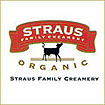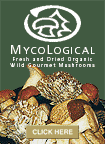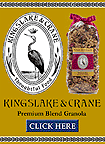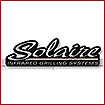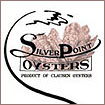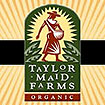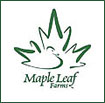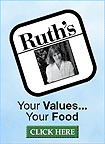Taste The Generations
Dry Creek Valley Remains Family-Owned
in an Era of Consolidation
HEALDSBURG,
CA, August 22, 2007-The Winegrowers of Dry Creek Valley
hosted the Eighth Annual Insider's Exploration of Dry Creek Valley
in early August, featuring a panel discussion at Seghesio Family
Vineyards entitled, "Taste the Generations." Bucking
the trend of corporate consolidation, all but one of the 62 bonded
wineries in Dry Creek Valley are family owned and 48 produce 10,000
cases or less. An appellation defined by its 137-year winemaking
history, Dry Creek Valley continues to be farmed by families from
generation to generation. This shift from one generation to another
continues to take place in the small picturesque valley in northern
Sonoma County, California.
Clay
Mauritson, president of the Winegrowers of Dry Creek Valley and
owner of Mauritson Winery welcomed the group of more than 140
media and trade with a personal account of his family's legacy
in Dry Creek Valley: "I am a sixth generation grape grower
in Dry Creek Valley," said Mauritson. "I am the first
of my family to make wine from my family's grapes and am doing
so at our Mauritson Winery built in 2004. The histories and stories
behind the Dry Creek Valley wines are what make them special.
Today we will discuss the generations of the Valley and how the
evolution is reflected in Dry Creek Valley wines."
"Our
three panelists are Ed Seghesio, patriarch, Seghesio Family Vineyards;
Rashell (Shelly) Rafanelli-Fehlman, winemaker, A. Rafanelli Winery;
and Fred Peterson, owner, Peterson Winery."
A
Patriarch's Evolution from Bulk to Fine Wine
In his introduction of Ed Seghesio, Mauritson commented: "I
think Seghesio Family Vineyards is one of the great pioneers in
the Zinfandel category. The winery has been through some amazing
twists and turns in the wine business, ultimately producing some
of the best Zinfandels coming out of Sonoma County."
Ed
Seghesio began with the story of his grandparents. "My Nonno
(grandfather) was born in the little town of Dogliani, in the
Piemonte area, close to Alba. A single man, he arrived in Sonoma
County in 1886 at 24 years of age. He went to work at Italian
Swiss Colony which had started in 1881." Seghesio's grandfather
married and bought 50 acres of land in 1895; planted grapes and
built a home that is still standing today. Seven years later,
he built a winery. It was a bulk winery; the wine was sold to
Italian Swiss Colony. "I spent a lot of time with my grandparents,
churning butter and packing wood," he reminisced. "In
1949, I married and my family and I purchased a winery and 11
acres of grapes for $75,000. I was in charge of operations; grapes
cost $45/ton. At the time, we were crushing about 20 percent of
the grapes in Sonoma County. We were a cash family. We paid cash.
There were no written contracts with growers. Agreements were
made with a handshake."
Seghesio
went on to explain how the bottom fell out of the bulk wine market
in the mid-70s. "We had to let our growers go. We had no
outlet for our product, and we flopped along until my son, Ted,
came back from college." At that point, the Seghesio family
had to decide which direction to take-to put a label on the bottle
or sell the winery. "Ted had the gusto to move ahead, and
that's what we did. Ted has a very good palate, and I kind of
moved back out of the way and let him take over in the 1980s.
When Cousin Peter came in 1986, things changed even more."
"We
decided to focus on Zinfandel, dropping our production from 100,000
cases to 35,000 cases. Our head-trained Cortina Vineyard in Dry
Creek Valley is where our top-of-the line Zinfandel comes from.
The clone is from the vines my Nonno planted in 1895. We hired
a world-renowned viticulturist to work with us. My son-in-law
runs the vineyards, Ted makes the wine and Peter sells it. It
is the new generation-the third and fourth generation Seghesios-who
are now the nucleus of the business."
A
Small Dry Creek Valley Winery Stays Small
Another long-time winery in Dry Creek Valley is A. Rafanelli Winery.
"I think it would be hard to argue that Rafanelli isn't one
of the first cult wines, not only in Sonoma County, but in California
in general," prefaced Mauritson in his introduction to Winemaker
Rashell (Shelly) Rafanelli-Fehlman. "The winery has stayed
small and dedicated to quality. It is one of the great success
stories in Dry Creek Valley."
"I'm
very lucky to be here and to have had the opportunity to join
the family business," commenced Rafanelli-Fehlman. "Our
Dry Creek Valley heritage began with my great-grandparents, Alberto
and Leticia, coming over from Italy. They settled here in Healdsburg.
It was my great-grandmother who brought the wine and grape knowledge
with her from the Old Country." At Leticia's urging, the
family moved to the country, settling in an area that reminded
them a lot of Italy, their home country. The first winery and
vineyards were established in 1911 where the Healdsburg High School
is located today. Later, Rashell's grandfather, Americo, purchased
the ranch in Dry Creek Valley where the new generation is making
wine in the old redwood workhorse barn built more than 100 years
ago.
"When
my father, David Rafanelli, joined my grandfather, he had to convince
my grandfather to start a Cabernet Sauvignon program," continued
Rafanelli-Fehlman. "When I graduated from college, I had
to convince my dad to let me start a Merlot program." She
has also made changes to the way the business is run. For example,
the winery mailing list is now on computer. "My dad used
to say that computers were just a fad," she remarked. "To
this day, he still doesn't own a computer."
Other
challenges facing the new generation at A. Rafanelli are labor,
the longevity of the 90-year-old Zinfandel vines and the health
of the Cabernet vineyards. "Fortunately, I am not alone.
My husband is our vineyard manager. It's a unique opportunity,
as we taste the wines together with our vineyard practices in
mind," she explained.
"The
uniqueness of Dry Creek Valley is that it consists of a lot of
family-based wineries," continued Rafanelli-Fehlman. I can
speak for a lot of the other small wineries in the Valley-it's
about quality, not quantity. We make the wines that we like in
the style that we like. We are not conforming to current trends.
We are not expanding nor selling out to the corporate world. It's
family based, and I believe there is a passion here that drives
us both as farmers and winemakers. It's not really about the money,
but a way of life. We want to preserve the Valley because we are
here for the long run. At A. Rafanelli, we are proud that 100
percent of our wines are from Dry Creek Valley."
A
Relative Newcomer Celebrates his 25th Year in Dry Creek Valley
"Fred Peterson describes himself as still a newcomer even
after a quarter of a century in the Valley," said Mauritson
in his introduction to the owner of Peterson Winery. "Fred
followed a different path to Dry Creek Valley, but he represents
the same passion and dedication to family and quality as the rest
of the old timers and other members of the panel. In fact, right
now, Fred is transitioning his business over to his son. I am
sure that they have felt many of the challenges in the transition
that the rest of us have experienced."
"I
first came to Dry Creek Valley in 1971," commenced Peterson.
"I was in the Navy, stationed at Treasure Island, waiting
to get reassigned. I was hitchhiking up to see a buddy in Fort
Bragg. A gentleman picked me up in Santa Rosa, and said he was
going out to the coast but had to make a little detour to get
some wine. I said, 'cool, I like wine.' And he went to A. Rafanelli
Winery. It was Shelly's granddad, Americo-we used to call him
'Am'-at the winery with a bottle of wine on a barrel. He poured
us a taste. It was pretty good stuff, and the fellow who was giving
me a ride said: 'Well, what do you want for it?' And Am said,
'Well, it's a buck a bottle, but if you buy it without the label,
it's 90 cents.'"
It
was a circuitous path Peterson followed until he finally made
it back to Dry Creek Valley, years after this first encounter.
After leaving the Navy, he spent a couple years at the University
of California, Santa Cruz. Taking a semester off from school,
he went to work at a friend's vineyard in Mendocino County. He
took classes in agriculture and decided he wanted to make a living
growing grapes and making wine. Peterson returned to school at
the University of California, Davis in the viticulture degree
program in 1976, after working in New Zealand, France and Napa
Valley. He worked at various wineries throughout California as
a vineyard manager and winemaker, until he formed a partnership
with Bill Hambrecht and moved to Dry Creek Valley. "I came
here at the end of 1982," said Peterson. "I doubt if
there were even 12 wineries producing wine in Dry Creek Valley
at the time. I managed and developed 650 acres of vineyards in
Sonoma and Mendocino Counties. In 1987, I talked Hambrecht into
letting me make wine in our little red barn on Lytton Springs
Road, and eight years later I purchased the majority interest
and went from the frying pan into the fire."
What
has always attracted Peterson to Dry Creek Valley, besides his
love for Zinfandel, are the people and the setting. "It's
a special place. The family tradition always appealed to me,"
he explained. "My son Jamie is now the winemaker."
Other
Dry Creek Valley wineries that are currently going through a transition
from one generation to another include Nalle, where Andrew is
working as winemaker with his father, Doug Nalle; Mill Creek Winery,
where Jeremy Kreck has taken over as winemaker; and Hawley Winery,
where sons Paul and Austin are working with their father, John
Hawley. There are also a number of long-time Dry Creek Valley
grape growing families that have recently established wineries.
Mounts Family Winery, where third-generation grape grower David
Mounts is the first generation to make wine from his family's
grapes. Sbragia Family Vineyards, Rued Winery and Passalacqua
Winery are other examples of this movement from grape growers
to wineries.
Peterson
concluded: "As I see the Valley evolve, I think the challenge
for all of us is to embrace our success and inevitable changes
without losing our unique connection to the traditions of winegrowing
and family that make the Dry Creek Valley such a special place.
|





